First ride: Harley-Davidson’s LiveWire electric bike is more Star Wars than Easy Rider
If it doesn’t wake the neighbourhood, is it still a Harley? We ride the electric Hog to find out | WATCH
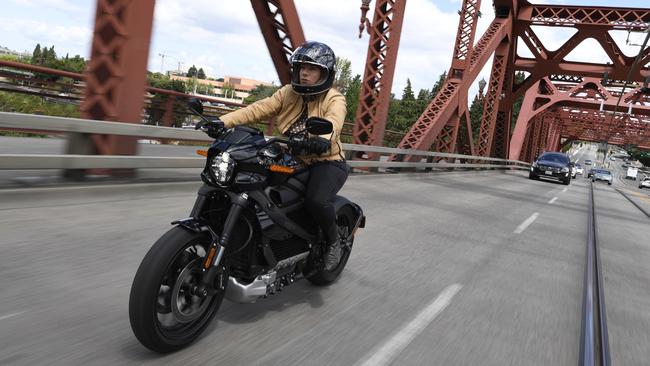
I’ve been test-riding Harley-Davidson’s first electric motorcycle, LiveWire, at its first international showing to 130 media worldwide. I was also one of only three women to ride LiveWire.
LiveWire’s launch is part of a Harley-Davidson plan to reinvigorate the company, accelerate international growth, build the next generation of riders and establish the company as a leader in the electrification of two-wheeled transportation.
Harley’s strategy emphasises expanding beyond the domestic US market. It wants to sell half its bikes in international markets by 2027, and is partnering with a China manufacturer to make small bikes for that fast-growing market.
In Australia, Harley aims to release LiveWire in August, 2020. A year out, there are so many questions about what LiveWire will be like, and now finally some answers. Does it roar like a traditional Harley, what about speed, acceleration, cornering, and braking. And what about no clutch, no gears?
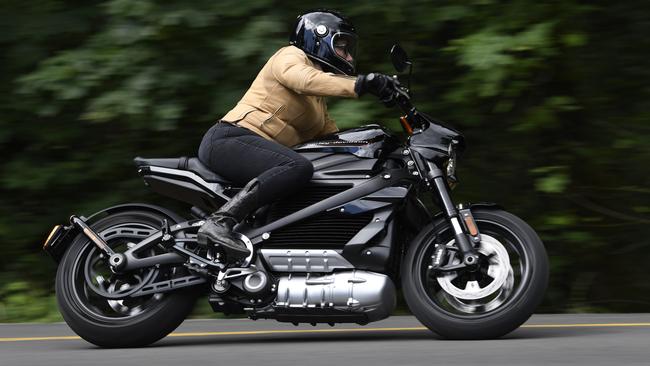
This is a completely different riding sensation to anything I have experienced. The closest comparison I can give it is the Speeder bikes from Star Wars. This thing rides with the agility and ease you’d expect from that fictional hovercraft from the future. It’s so simple to ride, except I kept accidentally changing riding modes when turning on the right hand indicator. Harley might want to consider reverting to the more popular idea of the indicator switch being on only the left handlebar, rather than split to the side on which you are indicating.
But what about the roar?
When activating the motorcycle, the electric motor produces a subtle pulsing. It’s so subtle you can barely feel it. You can when you move the bike forward a little. The pulsing ceases once you start to move, and resumes when the motorcycle comes to a stop. The LiveWire is designed to produce a new signature Harley-Davidson sound as it accelerates and gains speed.
There is no comparison to anything I have ever ridden. It’s light and agile, but not in a two-stroke way, and it corners perfectly. You feel indestructible and safe. There is no way any rider would walk away from this machine unimpressed. The bike was perfect in downtown Portland traffic.
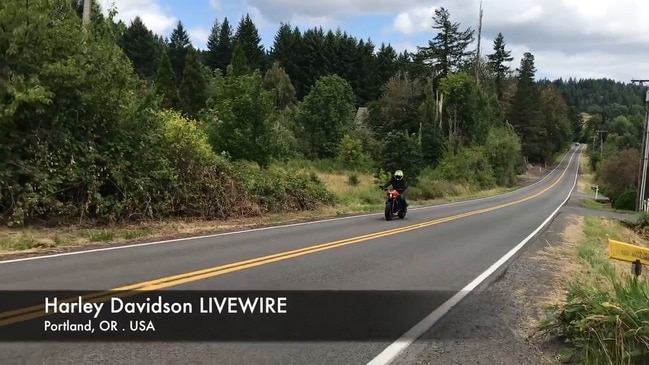
Before the trial I feared I’d need to completely relearn riding without the aid of a clutch, particularly for low-speed manoeuvring. This didn’t come into the picture.
We headed northwest through some beautiful countryside and brilliant roads. I was mid-corner when a rather large deer bounded into my path. The bike handled the situation perfectly. The added adrenaline was enough to prod me into playing with Sports Mode. It’s definitely a more aggressive and fun ride. Backing off the throttle offered enough slow down not to use the brakes.
The issue with LiveWire will be recharging infrastructure in Australia to support long weekend rides. Some 235km of city riding, but only 152km of mixed urban and freeway before a recharge doesn’t sound that crash hot considering the number of kilometres we Australian riders do over a weekend on our favourite backwater runs.
In its promotional material, Harley says a dealer would need to fork out $80k to buy the latest in DCFC fast-charging technology. Harley however says LiveWire is compatible with other electric vehicle charging stations in the market except Tesla. Nevertheless, you’ll need to be careful roaming too far off the beaten track. Think of the anxiety when your phone’s battery drops below 10pc and apply that to your ride!
LiveWire is equipped with its own on-board charger that plugs into a standard household outlet via a power cord under the seat. It delivers 20km per hour of charging and a full charge overnight.
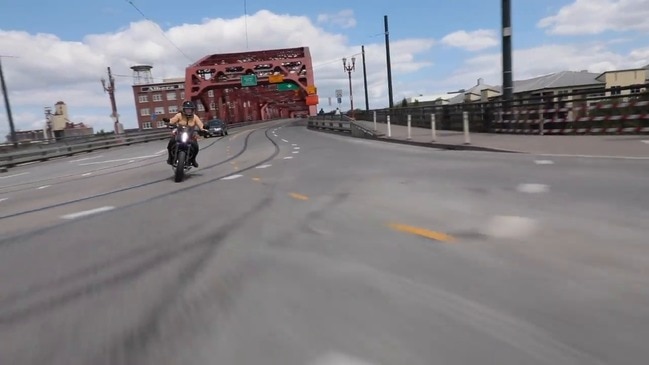
The bike is powered by a 15.5kWh high-voltage battery comprising lithium-ion cells. It is positioned at the centre and surrounded by the bike’s cast-aluminium frame. The housing acts as a heat-sink to help keep the cells cool. There’s also a water jacket, with coolant circulated through a small radiator, and it is positioned low in the chassis, stabilising the centre of gravity and aiding manoeuvrability.
The power is comparable to the Harley FXDR, but it’s just not meaty. After riding LiveWire, I believe, as does Harley, there is room in the marketplace for both traditional and electrification in the HD stable.
The new-age electric Harley rider may be different from the iconic leather-clad clan. I doubt he will have neck tatts. Instead, he’ll probably be wearing chinos and Italian leather. He’ll own every gadget recently released and have a wardrobe full of high-end labels. He’ll be one of those hot geeky guys that earns way too much money.
Technical stuff
So how does the Livewire propel itself? It does it this way. The motor output shaft mates to a gearbox containing a 9.71:1 gear reduction running in an oil bath. A final-drive belt transfers power from the gearbox output pulley to the rear wheel, with a 3:1 ratio between the output pulley and the wheel pulley. The gearset is designed to produce the new Harley-Davidson sound that represents the smooth, electric power of the LiveWire motorcycle. I don’t know. I kind of fell in love with that rumbling on the more traditional FXDR.
The electric Harley uses a cellular telematics control unit (TCU) that functions as an LTE-enabled modem connecting LiveWire to the cloud. The H-D Connect service will be offered for a one-year free trial period when purchasing a LiveWire.
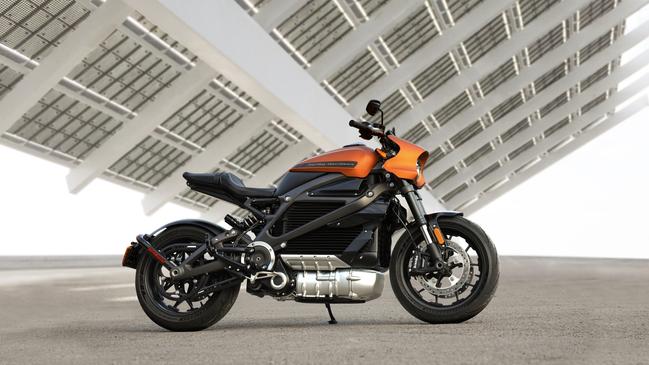
Livewire has a TFT (thin-film-transistor) colour touchscreen that is almost 11cm. It’s located in the centre of the handlebars and offers all the indicators you’d expect. It has ‘ride mode’ indicator, ABS and traction control, warning lights, and charging status. Its active Bluetooth connectivity lets you see incoming call info, and music files on the screen. The rider controls music and phone functions with a joystick hand controls.
Bike data is sent by Bluetooth to your smartphone. You don’t need to be anywhere near the bike while it charges to check on its status. On the security front, there are tamper alerts and vehicle location trackers, and you can enjoy being nagged with service reminders and notifications. They are a positive for the forgetful among us. Navigation is part of the H-D app offering. The app will be available for Australians from August next year at all the places you normally get your apps from.
We’ve all been enjoying ABS assistance for many years now, but the Cornering Enhanced Antilock Braking System (C-ABS) is a variant of ABS that takes into consideration the lean angle of the motorcycle. The brake pressure required to limit wheel slip when cornering is typically lower than the pressure required under straight line operation.
Rear-wheel Lift Mitigation uses the C-ABS sensors and the six-axis inertial measurement unit (IMU) to manage rear-wheel lift during heavy braking and further balance deceleration and rider control. There is also the cornering enhanced traction control system (C-TCS) to keep the rear wheel from “spinning out” when the motorcycle is accelerating. This enhances rider control and confidence, especially in wet weather.
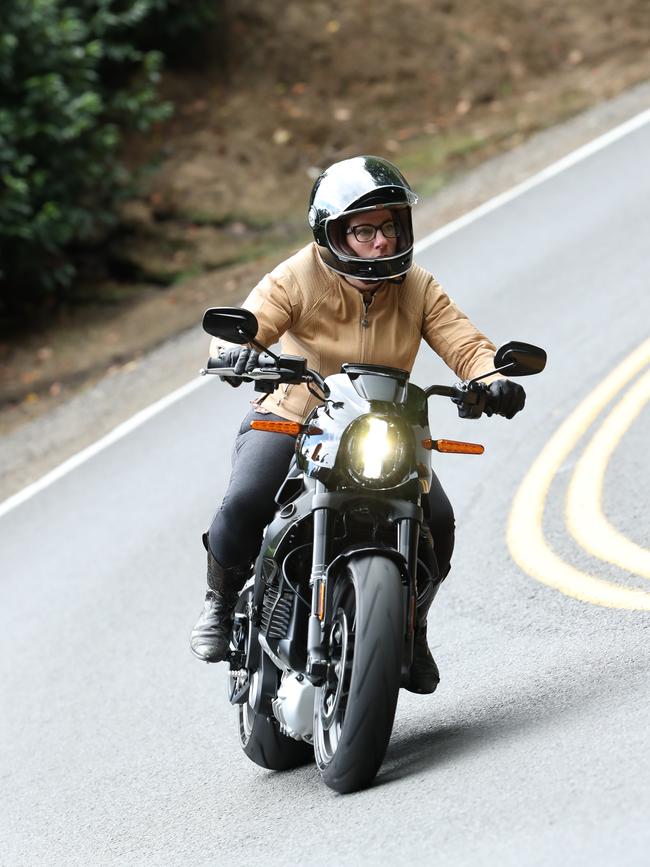
The “drag-torque slip control system” (DSCS) is designed to manage rear-wheel slip and prevent rear-wheel lock due to regenerative braking. This typically occurs when the rider decelerates on wet or slippery road surfaces. DSCS functions at speeds over approximately 17kph and works in concert with the ABS system to balance motorcycle deceleration and rider control. DSCS is integral to rear wheel ABS performance.
I know what some of you are thinking …. WHAT! No burn outs? This is a great feature for an inexperienced rider if there is a sudden change in road surface, or when riding on an unpaved road. The action of C-TCS is also tailored when cornering based on lean angle. Each preprogrammed ride mode has a specific level of C-TCS.
C-TCS is also designed to support front-wheel lift mitigation to reduce the height and duration of front-wheel lift. In other words, no wheelies. Back in your box you show offs. Think about all the under 25-year old’s this will save. Never fear, the height and duration of front-wheel lift is tied to the rider-selected C-TCS mode, with Rain being the most-restrictive and Sport being the least-restrictive, and again, it can be switched off entirely.
Harley Davidson says LiveWire will cost about $45K when it comes to Australia in mid-2020.
Monique Lisa is a former professional rider and is covering the Harley-Davidson LiveWire launch for The Australian. She attended the launch event as a guest of Harley-Davidson. You can read more of her analysis of LiveWire in The Australian next week.


